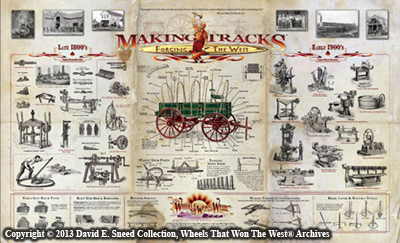Clearly, for any subject to be fully appreciated, itselements must be understood. Plus, oncewe have a good grasp of the terms, it’s easier to communicate and convey the significanceof every surviving heavy transport.
The term ‘drag shoe’ refers to a wagon accessoryused in tandem with the braking of the rear wheel(s) during rugged downhilltravel. As seen it the photo above, itsheavy, cast metal design is engineered to allow wagon and coach wheels to rideon it in order to save wear and tear on the metal tire. As part of this arrangement, the wheel islocked in place by a chain and the resulting drag helps slow the vehicle’sdescent.
Like other elements of horse drawn vehicles, dragshoes came in a wide variety of sizes and styles as well as patents. One such patent was both applied for andgranted in 1892. Optimizing a vehicledriver’s time, convenience, load safety and equipment security, Gustave Homesof St. Louis, Missouri proposed an automatic drag shoe device that would beattached to a wagon. This innovation wasengineered in such a way that it could be lowered and raised without everleaving the driver’s seat and relinquishing control of the draft animals.
Also part of the patent, an accompanying calk (seebelow) could be attached to the shoe to add even more ‘bite’ and drag whiledescending particularly dangerous inclines. While we’ve never seen evidence of this device on a wagon, individualdrag shoes of all sizes and types have become much sought after by collectorsand enthusiasts.




